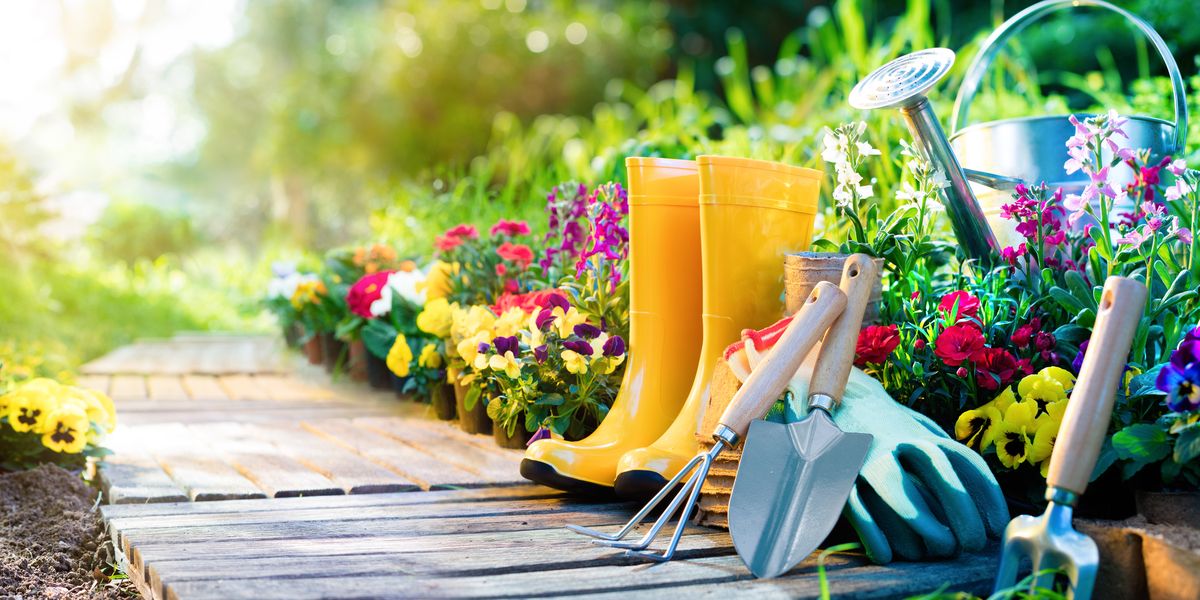Thrive right into a Pro: Home Gardening Tips for Beginners
Wiki Article
The Ultimate Guide to Gardening for Beginners: Step-by-Step Tips and Strategies for Expanding a Thriving Garden
Are you prepared to study the globe of gardening? Look no more than "The Ultimate Overview to Horticulture for Beginners." This step-by-step guide will certainly stroll you through whatever you require to know to expand a thriving garden. From recognizing your yard room to selecting the right plants and preparing the dirt, we've got you covered. Prepare to release your environment-friendly thumb and create a beautiful, prospering yard.Recognizing Your Yard Space
To maximize your horticulture success, start by familiarizing on your own with the one-of-a-kind characteristics of your garden area. Understanding your yard area is necessary for producing a growing yard. Begin by observing the quantity of sunlight your garden obtains throughout the day. Bear in mind of any areas that are shaded and those that obtain complete sun. This will help you figure out which plants will certainly flourish in each location.Next, evaluate the dirt in your yard. Is it sandy, clay-like, or loamy? Recognizing your dirt kind will certainly assist you in choosing the right plants and implementing suitable soil amendments. Additionally, take into consideration the drain of your garden. Is it prone to waterlogging or does it drain rapidly? This information will help you make informed decisions about watering and plant positioning.
In addition, take note of any kind of microclimates within your yard. These are tiny locations that may differ in temperature or dampness degrees compared to the rest of your garden. As an example, a south-facing wall surface may maintain heat, producing a warmer microclimate. Make use of these variants to your advantage by growing heat-loving or moisture-loving plants in these locations.
Selecting the Right Plants

Do you like low-maintenance plants or are you willing to put in additional effort for high-yield crops? Think regarding the quantity of time, energy, and sources you are eager to spend in your yard.
In addition, take into consideration the space available in your yard. Take measurements and intend out the design of your plants. Take into consideration the fully grown dimension of each plant and make sure they have enough room to grow without congestion each other.
Ultimately, think of the usefulness of your plant selections. gardening tips for beginners. Will you have the ability to offer the essential care and maintenance for your picked plants? Take into consideration aspects such as watering, fertilizing, pest control, and trimming
Preparing the Dirt for Growing
As soon as you have picked the appropriate plants for your flourishing yard, it's time to dive into the important task of preparing the soil for planting. Take a sample and test its pH levels, as different plants flourish in various pH arrays.
Once the dirt is prepared, Visit Your URL produce furrows or holes for planting. The depth and spacing will certainly depend on the details demands of your picked plants, so refer to the seed packages or plant tags for assistance.
Last but not least, water the freshly planted location thoroughly. This will certainly assist clear up the dirt and give the plants with the dampness they need to establish themselves. As you water, beware not to clean away the soil or damage the fragile plants. With correct soil prep work, your garden will be well-appointed to support the growth and success of your plants.
Watering and Fertilizing Techniques
After preparing the dirt for planting, it's essential to recognize efficient watering and fertilizing strategies to make sure the health and development of your yard. One way to gauge if your plants require watering is by sticking your finger regarding an inch right into the dirt. When watering, aim for the base of the plants, as moistening the leaves can motivate illness.Maintaining a Healthy And Balanced Yard
To keep a healthy yard, you ought to routinely inspect your plants for indications of pests web or diseases. By doing this, you can capture any type of concerns early on and take the needed actions to avoid them from spreading out and causing damages to your entire yard.One method to deal with bugs is by utilizing natural solutions such you can check here as insecticidal soaps or neem oil. These work in managing common pests like aphids, termites, and whiteflies without harming valuable pests. Another technique is to motivate valuable bugs like ladybugs and lacewings, which feed on garden insects. Growing blossoms such as marigolds, sunflowers, and sissies will certainly draw in these useful bugs to your yard.
In addition to parasites, illness can also affect your plants. Correct spacing in between plants and good air flow can additionally assist stop the spread of diseases.
Final Thought
By comprehending your yard area, selecting the right plants, preparing the soil, and applying proper watering and feeding techniques, you can create a thriving yard. With perseverance and commitment, you'll quickly be taking pleasure in the appeal and bounty of your very own growing garden.Use these variants to your benefit by planting moisture-loving or heat-loving plants in these areas.

Report this wiki page